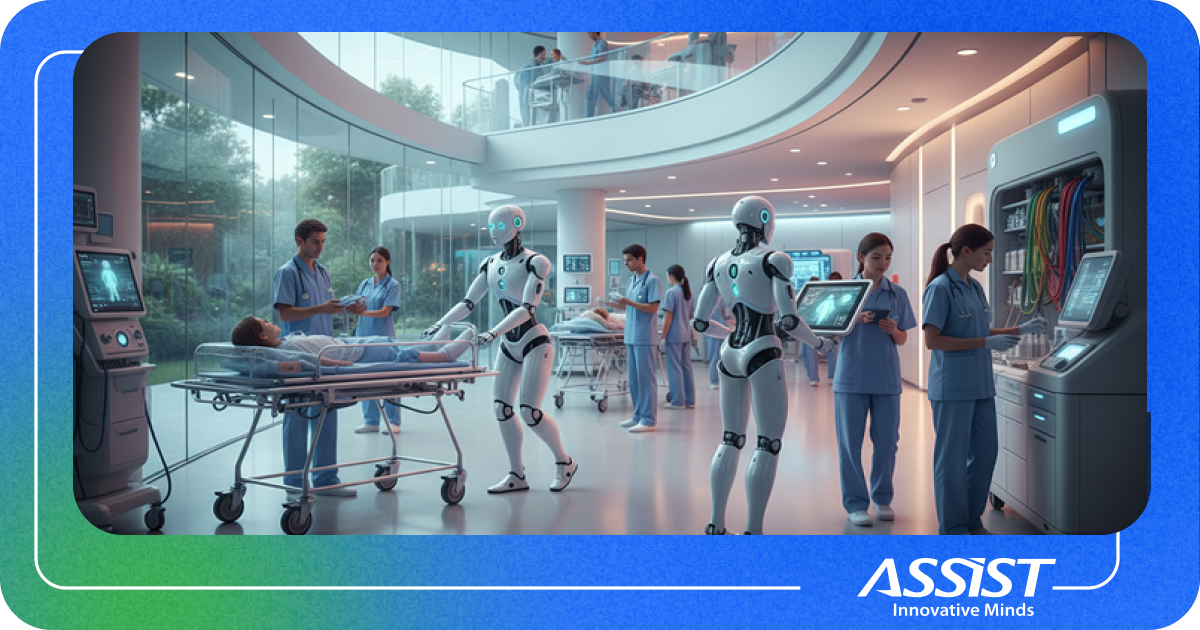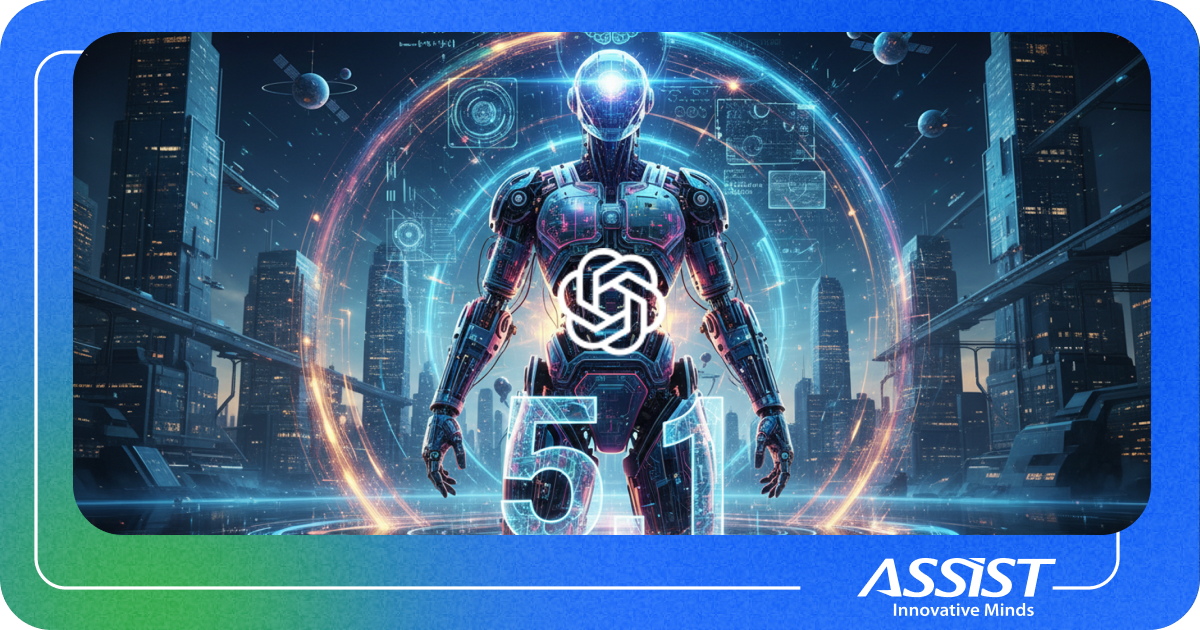Meta, OpenAI, Google: Who Will Win the AGI Race?
At ASSIST Software, innovation happens at the intersection of leading research and real-world application. Nowhere is that more visible than in the global race toward Artificial General Intelligence (AGI), the dream of creating AI that can think, learn, and adapt like humans.
This isn’t science fiction anymore. Tech giants like Meta, OpenAI, Google, and leading Chinese AI labs are pouring billions into infrastructure, talent, and research. The race is on, and the stakes are massive, shaping economies, global security, and how technology integrates into our daily lives.
Meta’s Big AGI Bet
Meta aims to lead the AGI race. The company recently established Meta Superintelligence Labs and an AGI Foundations team, consolidating its AI initiatives under one ambitious vision.
They’re building some of the largest compute clusters in history, codenamed Prometheus and Hyperion, with the latter projected to run at up to five gigawatts. And they’re not shy about recruiting top talent, offering packages worth up to $300 million over four years to attract researchers from rivals like OpenAI, Google, and Anthropic.
Behind the scenes, an internal model known as Behemoth shows early signs of self-improvement, sparking speculation about a leap toward Artificial Superintelligence. However, Mark Zuckerberg says public rollouts will be cautious, with safety as a top priority.
At ASSIST Software, we follow developments like these closely, not just as industry news, but as signals for how advanced AI capabilities will filter down into tools we can adapt and integrate for our clients.

OpenAI’s GPT-5: Sharper, Faster, Smarter
On August 7, 2025, OpenAI unveiled GPT-5, calling it its most capable model yet. It brings stronger reasoning, fewer hallucinations, and more consistent performance in specialized domains. Already, GPT-5 is powering Microsoft Copilot, ChatGPT, and thousands of API-driven solutions.
A standout feature is its dynamic routing, switching between quick responses and deep analysis based on complexity. It’s a decisive step forward, but even OpenAI’s biggest fans admit it’s more refinement than revolution.
Rollout wasn’t flawless. GPT-4o’s removal triggered backlash, leading OpenAI to restore it for Plus subscribers and add modes like Auto, Fast, and Thinking. Safety systems are also evolving, aiming for nuance over blanket refusals, a goal ASSIST shares when designing AI systems that must balance intelligence with responsibility.
The Global AGI Push
The race goes well beyond Meta and OpenAI. Google’s DeepMind, with co-founder Sergey Brin taking a more hands-on role, has shifted to an intensive in-office model to speed up collaboration and problem-solving. The focus is on multi-modal systems, advanced reasoning, and reinforcement learning — key ingredients they believe could unlock AGI.
In China, AI labs such as Baidu and Tencent AI Lab, supported by significant government investment, are developing large-scale models and autonomous decision-making systems. This has turned AGI into a geopolitical contest, with the U.S. and China each viewing leadership in this technology as essential for future economic and strategic influence.
The Personalities Driving the Drama
The AGI race is shaped as much by influential individuals as by corporate giants. Elon Musk and Sam Altman, once OpenAI co-founders, are now rivals trading public barbs. Their latest clash over App Store rankings and AI model comparisons added a touch of theater to the field. Beyond the headlines, prominent researchers are leaving big labs to launch leaner, more agile startups, a reminder that AGI’s future could just as easily be shaped in a small office as in a trillion-dollar campus.

The Risks and the Reality
Even with all this momentum, experts warn AGI isn’t arriving tomorrow. Definitions vary; some require matching human intelligence across all domains, others demand autonomous learning in entirely new areas.
Risks include bias, misinformation, and misuse in cybersecurity or geopolitics. And there’s the economic impact: as AI takes on more roles, industries must be ready to reskill and adapt. AI remains “narrow,” excelling in specific tasks, but those tasks are growing more complex daily.
The Business Takeaway
For businesses, the AGI race is a glimpse into the near future of work and competition. Tools that are once exclusive to research labs will soon appear in everyday software. Preparing now means:
- Experimenting early with AI to automate workflows and enhance decision-making.
- Upskilling teams to work alongside advanced AI systems.
- Building adaptable tech stacks to integrate new AI models quickly.
- Leading with trust by setting ethical and transparency standards in advance.
Organizations that treat AGI readiness as a strategic priority will have a competitive edge in the coming decade.
What This Means for ASSIST Software and Our Partners
For ASSIST Software, the AGI race is an opportunity. Big tech may be building the models, but agile innovators like us are the ones who will turn them into real-world solutions that solve client problems today.
We have already integrated advanced AI into automation, analytics, and customer experiences and are about to receive our official AI certification. This recognition further validates our expertise and commitment to delivering trusted, high-quality AI solutions. We invest in continuous learning, research partnerships, and hands-on experimentation to ensure we can adapt as AGI capabilities evolve. We lead with ethics and transparency because trust will be as critical as technology in the coming years.

We’re ready to be the bridge for our clients and partners, guiding them through AI adoption now and preparing them for the transformative possibilities that AGI will bring tomorrow.
The race toward AGI is on. At ASSIST Software, we’re preparing to help you win.
Follow our page for more insights on AI, AGI, and the future of technology.



